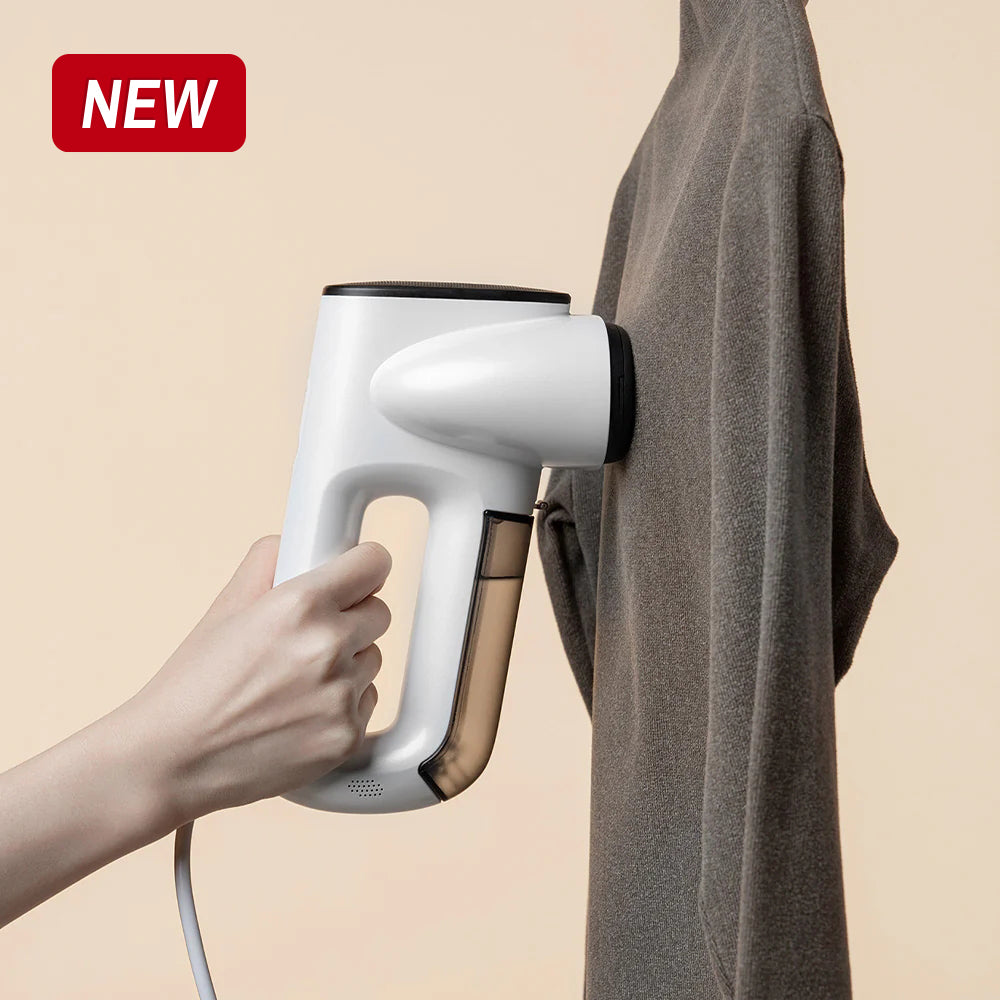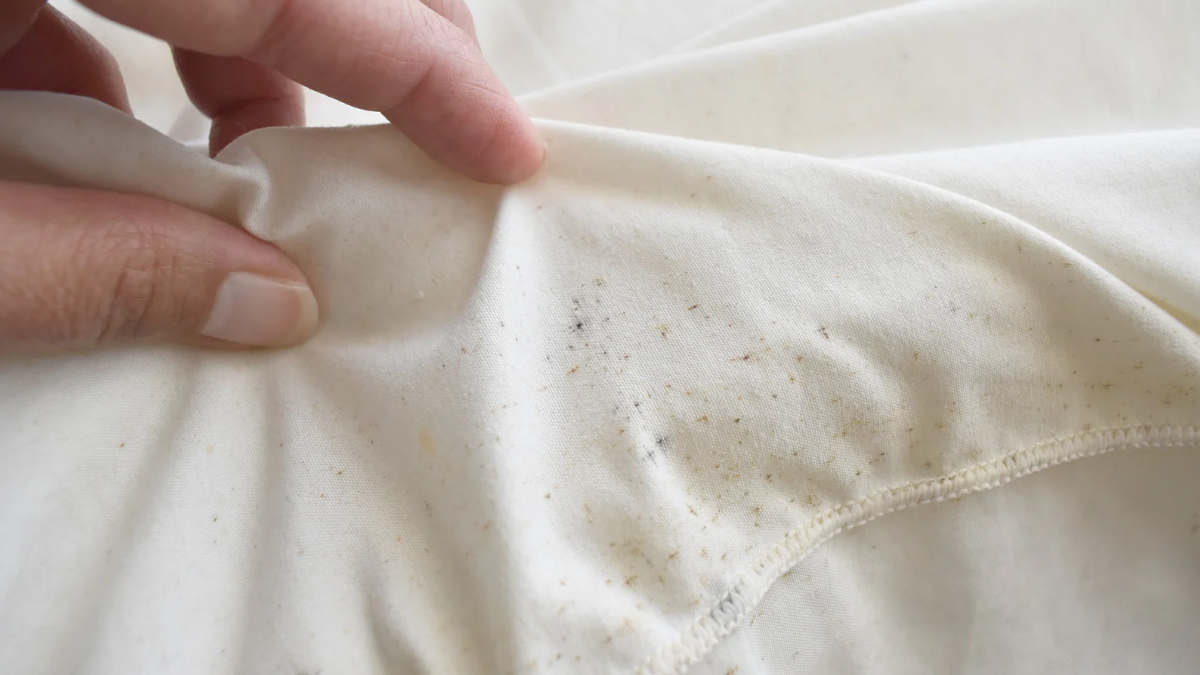Picture this: you're reaching deep into your closet for that favorite sweater you haven't worn in months, excited to wear it again. But as you pull it out, your heart sinks. There they are – ugly green and black spots scattered across the fabric. Mold!
If you've ever experienced this disappointing moment, you're definitely not alone. Finding mold on your clothes can trigger a mix of emotions – frustration at the potential loss of a beloved item, confusion about how it happened, and concern about whether those spores might affect your health.
Many people immediately wonder: "Does heat kill mold?" or more specifically, "Will heat kill mold on clothes?" These are excellent questions, and they're exactly what we'll explore in this article.
In the following sections, we'll dive into what causes mold to grow on your clothes in the first place, examine how heat can be an effective weapon against it, and provide practical solutions to both remove existing mold and prevent future outbreaks. Let's turn up the heat on this fuzzy, unwelcome intruder!

What Causes Mold on Clothes and Why It Matters
What Is Mold and Why Does It Grow on Clothes?
Mold is a type of fungus that thrives in warm, damp environments with organic material to feed on. Unfortunately, your clothes check all these boxes! The natural fibers in fabrics like cotton, wool, and silk provide the perfect food source for hungry mold spores.
These microscopic spores float everywhere in the air around us. When they land on a suitable surface with the right conditions – moisture being the most critical factor – they begin to grow and multiply. Before you know it, you've got visible patches of mold ruining your favorite items.
Mold on clothes is incredibly common, especially in humid climates or during damp seasons. Many people don't realize how widespread the problem is until they discover it in their own wardrobes.
Why Clothes Get Moldy: Common Everyday Causes
Mold can grow on clothes more easily than you might think. Here are some common reasons why it happens:
-
Storing clothes in humid places
If your closet or drawers don’t get much air, moisture can build up. Mold loves damp, closed spaces like these. -
Putting away damp clothes
Clothes that aren’t fully dry—even just a little damp—can start growing mold. This often happens with laundry that wasn’t dried all the way, or clothes that got wet from rain or sweat. -
Food or drink stains
Spilled soda, juice, or food can leave behind tiny bits of organic material. Mold spores feed on this and start to grow. -
Storing dirty clothes
Even if they don’t look dirty, clothes can collect sweat, body oils, and skin flakes. These things give mold something to grow on. -
Packing away clothes for the season
When you store winter or summer clothes for a long time without cleaning and drying them properly, you might find moldy spots when you unpack them months later.
Does Heat Kill Mold
The Power of Heat: How High Temperatures Affect Mold
Heat is one of nature's most effective mold fighters. But how exactly does it work?
At a microscopic level, heat disrupts the mold's cellular structure. Mold cells contain proteins and enzymes that allow them to function and reproduce. When exposed to sufficiently high temperatures, these proteins begin to denature – essentially, they lose their shape and stop working properly. Think of it like frying an egg – once heated, the protein structure changes permanently.
So, does heat kill mold? The scientific answer is yes – when the temperature is high enough and sustained for an adequate period. Most mold species begin to die when exposed to temperatures above 140°F (60°C) for extended periods.
Will heat kill mold on clothes specifically? It can, but the effectiveness depends on reaching and maintaining the right temperature throughout the fabric without damaging the material itself, which can be tricky.
Is Heat Effective in Killing Mold?
Research consistently shows that heat treatment is one of the most reliable methods for eliminating mold. Studies in environmental health have demonstrated that sustained heat exposure can reduce mold populations by 99% or more under controlled conditions.
The key factors for effective heat treatment include:
- Temperature threshold: Most mold species begin dying at temperatures between 140-160°F (60-71°C).
- Duration of exposure: Brief exposure isn't enough – the heat needs to penetrate all layers of the fabric and be maintained for several minutes to hours, depending on the temperature.
- Complete coverage: Heat must reach all affected areas, including seams, pockets, and folds where mold might be hiding.
These scientific findings support heat as a valuable tool in your fight against moldy clothes, but applying this knowledge effectively at home requires some careful consideration.
Does Heat Kill Mold? Yes—If You Use It Right
Heat is one of the best ways to kill mold. Scientists have found that, when used correctly, heat can get rid of over 99% of mold in controlled tests.
But to make it work at home, a few things really matter:
-
The right temperature
Most types of mold start to die at around 140–160°F (60–71°C). That’s hotter than most people think. -
Enough time
A quick blast of heat won’t do much. You need to keep the fabric hot long enough so the heat can reach deep into all the layers. -
Full coverage
Mold can hide in seams, pockets, or folds in the fabric. The heat has to reach every part of the clothing to be fully effective.
So yes, heat can kill mold. But to really make it work, you need the right temperature, enough time, and even coverage. That’s why using heat at home takes some care and planning.
Home Methods That Use Heat – And Their Limits
Several common household methods leverage heat to combat mold:
Hot water washing: Most washing machines can reach temperatures that stress or kill mold. The hottest setting (usually 130-140°F/54-60°C on many machines) combined with detergent can be effective for washable items.
Clothes dryers: A full, hot drying cycle can reach temperatures around 135°F (57°C), which helps eliminate moisture and can kill some mold.
Ironing: The direct, intense heat from an iron (typically 300-400°F/149-204°C) can kill mold spores on contact.
Sunlight: While not as intense as machine heat, several hours in direct sunlight provide both UV radiation and heat that can help kill surface mold.
However, these methods have important limitations:
- Not all fabrics can withstand high heat without damage
- Heat distribution may be uneven, leaving some areas untreated
- Deep-seated mold in thick fabrics might survive if heat doesn't penetrate fully
- Some colored fabrics may fade with aggressive heat treatment

The Garment Steamer Advantage: Gentle Yet Helpful Heat
Garment steamers like Neakasa steamer offer an interesting middle ground in mold prevention. While they typically don't reach the sustained high temperatures needed to eliminate established mold colonies, they provide several benefits:
- The steam's moisture quickly evaporates, helping to dry out fibers after treatment
- The heat from steam (around 212°F/100°C) can weaken surface mold and make it easier to remove
- Regular steaming helps prevent the damp conditions that mold loves
- Steamers can reach into seams and folds where mold often begins
Using a garment steamer as part of your regular clothing care routine helps maintain a less mold-friendly environment. While steaming alone isn't a complete solution for heavily moldy clothes, it's an excellent preventative measure and can be part of a comprehensive approach to keeping your wardrobe fresh.
Although a steamer isn't designed specifically to eliminate severe mold on clothes, its heat can assist in preventing mold buildup during regular use, especially when combined with other preventative practices.

- AirIron Technology for Instant Wrinkle Removal.
- Effortless One-Handed Operation, Safe & Easy.
- Triple the Speed, Triple the Results.
How to Remove and Prevent Mold on Clothes
What to Do When You Find Moldy Clothes
If you spot mold on your clothes, don’t panic — but act fast:
- Keep it separate: Take the moldy item and put it in a plastic bag right away. This helps stop mold spores from spreading to your other clothes.
- Take it outside: If you can, bring the clothes outdoors and gently brush off any visible mold. Doing this outside keeps mold spores out of your home.
- Check the damage: Look closely to see how bad the mold is. If it’s just a small spot, you might be able to save the item. If it’s all over or deeply set in, it might be harder to clean.
- Let it air out: If the weather’s good, hang the clothes in direct sunlight for a few hours. Sunlight helps dry out moisture, and its UV rays can weaken the mold.
These steps are a good start, especially if the mold is only on the surface. If the mold goes deeper or covers more of the fabric, you’ll need to clean the clothes more thoroughly.
How to Remove Mold from Clothes
The cleaning method depends on the fabric:
For machine-washable clothes:
- Treat the spots: Mix equal parts white vinegar and water. Dab or spray it on the moldy areas.
- Use hot water: Wash the clothes on the hottest setting that the fabric can handle (check the care label first).
- Add mold-fighting ingredients: You can add borax, oxygen bleach, or a special anti-mold laundry product to boost cleaning power.
- Rinse well: Run an extra rinse cycle to wash away any leftover vinegar or mold.
For delicate fabrics (like silk or wool):
- Spot clean carefully: Use a mild solution of vinegar or hydrogen peroxide and test it on a hidden part of the fabric first to make sure it won’t stain.
- Consider dry cleaning: If the fabric is really delicate, take it to a professional cleaner and let them know about the mold.
- Gentle hand wash: Use warm (not hot) water and a gentle anti-fungal soap if you're cleaning it at home.
After washing:
- Dry completely: If it’s sunny, hang the clothes outside to dry in the sun.
- Use a dryer: For clothes that can handle heat, a hot dryer helps kill leftover mold.
- Make sure it’s fully dry: Never put damp clothes back in the closet — that’s how mold comes back.
Conclusion: Use Heat to Fight Mold on Clothes
Heat can be one of your best tools when it comes to stopping mold. Washing clothes in hot water, drying them completely, and even using a steamer can all help kill mold and keep it from coming back.
Steamers might not be strong enough to fix really bad mold problems, but they’re great for daily use. They help keep your clothes dry and fresh — which makes it harder for mold to grow in the first place.
The most important thing? Act fast. As soon as you notice mold, take care of it. That way, you can save your clothes and protect your health too.
When you understand how mold works and use smart habits like proper washing, drying, and storing, you can avoid musty-smelling clothes and surprise mold spots. Your clothes will last longer, and you'll feel better knowing everything is clean and safe.








Leave a comment
This site is protected by hCaptcha and the hCaptcha Privacy Policy and Terms of Service apply.